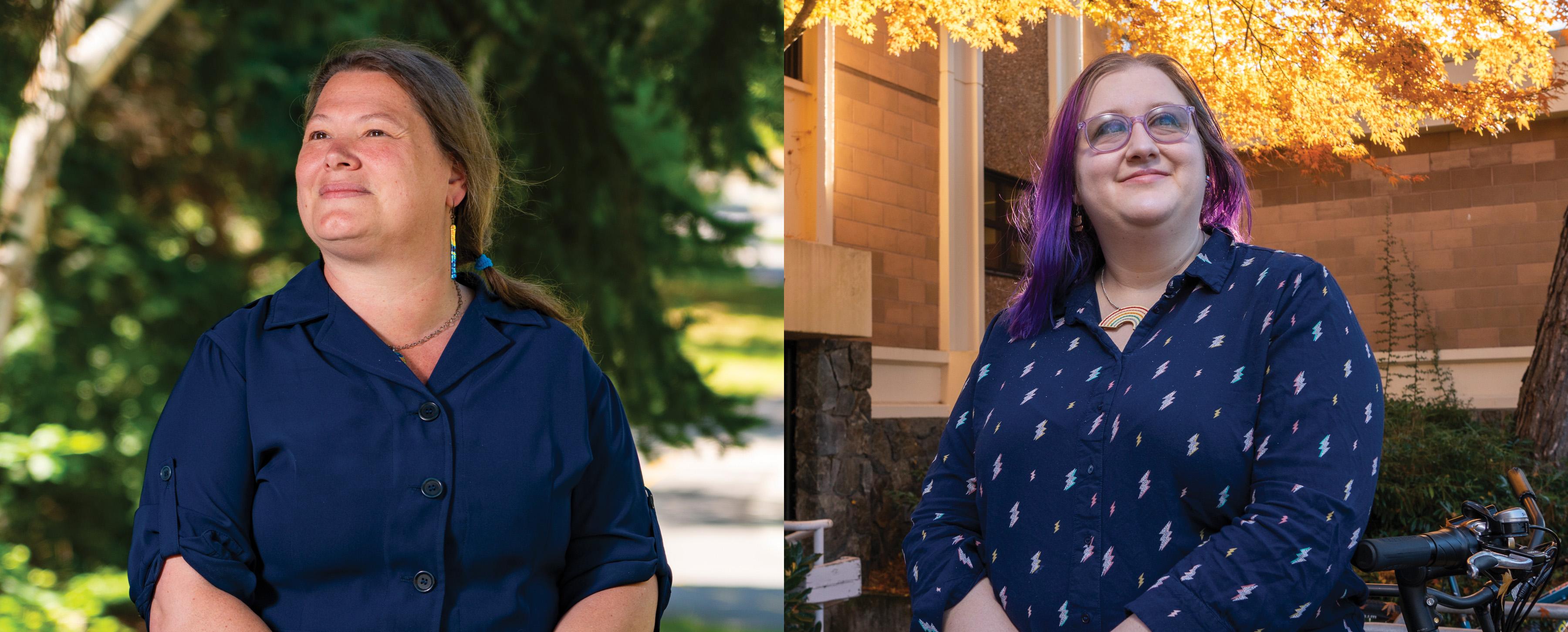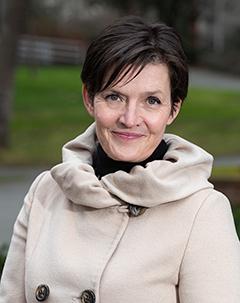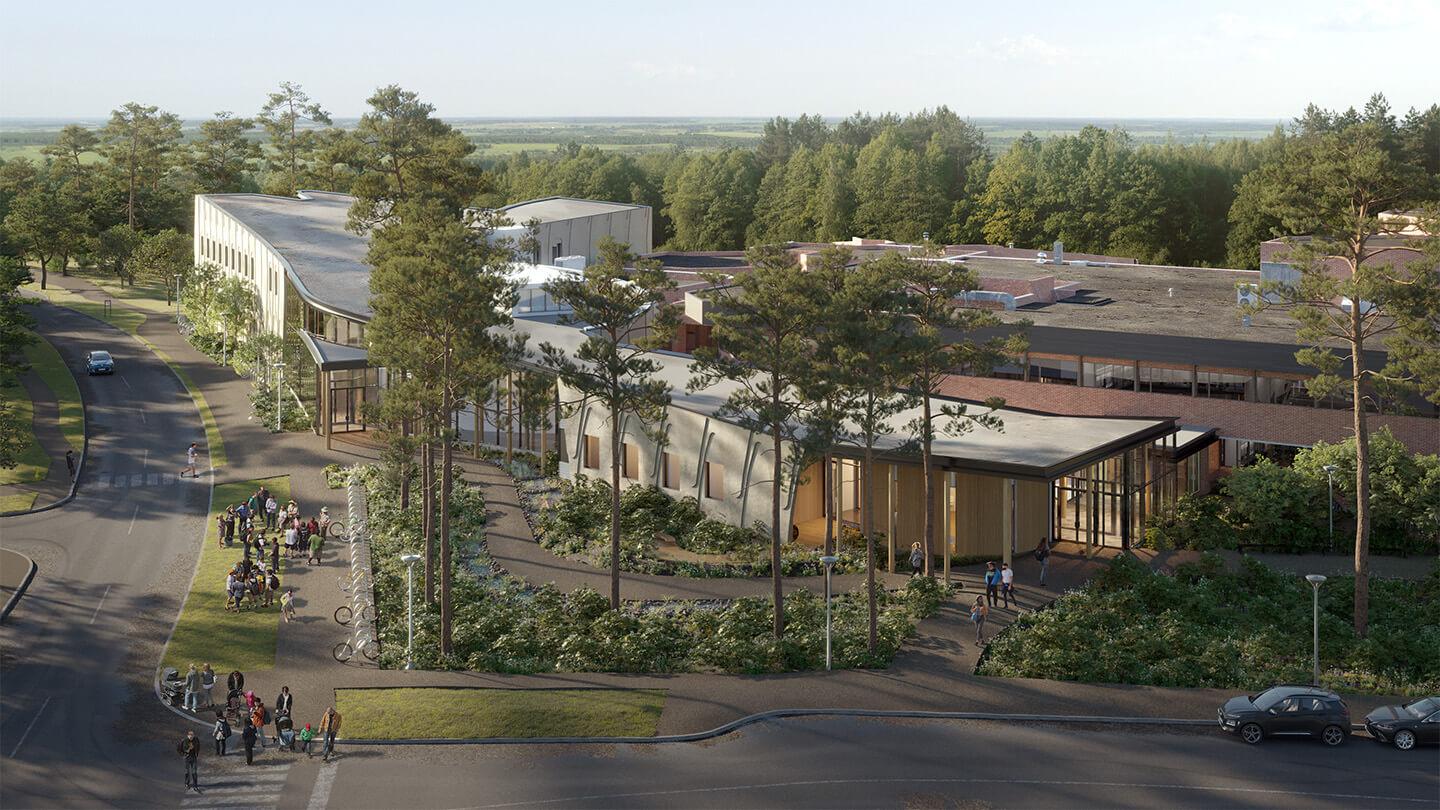Making Room for the Conversation

Cara Segger’s passion for accessibility had a rough start: a bumping bus ride that jolted every bone in her injured neck, to and from school throughout her undergrad and graduate degrees. “My main concern back then was masking,” says the project manager in University Systems. “Trying to arrange my life so it didn’t affect my education or opportunities.”
When Segger discovered the internet in 1999, everything changed. “When I found this magical portal into digital space, my disabilities didn’t exist anymore,” she recalls. “There were no activities that I needed to do that I couldn’t do.” She began to notice other people who struggled with barriers online, and looked for ways to remove those barriers. Thus began her journey into digital accessibility.
Segger now sits on UVic’s Accessibility Committee, helping to reshape the university experience to be inclusive for everyone. She spearheaded Digital Accessibility Champions last year—a Microsoft Office Teams channel where people can share ways to improve accessibility across campus. “People across all staff, across every silo, are using it,” Segger says.
PhD student Hannah Brown also sits on the Accessibility Committee, and over time has shaped the Society for Students with a Disability into a powerful advocacy force at UVic. A gifted speaker, connector and advocate, Brown works to raise the voice of people with barriers to access—including international students and people with caring commitments—connecting disparate groups for important conversations. “Lots of people are doing lots of great work across campus, but they don't necessarily know what other people are doing,” they say.
You don’t have to launch a campaign to make an impact, though. Small shifts often lead to big improvements. “I don't know the answers for building a bus that doesn't shake people with spinal trauma around,” Segger says. “But I sure do know how to put alt text on an image, use plain language, and create some white space around things.”
By addressing barriers, we can increase access, inclusion and independence for all members of our community. Accessibility champions like Cara, Hannah and other members of our Accessibility Committee are crucial to our success, as they advocate for change and push us to explore new and alternative approaches.
The UVic Accessibility Committee formed in 2022 to address legislative requirements that all higher-ed institutions create an accessibility plan and a committee to guide its implementation.
Last year the committee conducted campus-wide consultation to better understand accessibility challenges at UVic, then drafted a plan that includes priorities for improving accessibility, a list of resources and supports, ways to report barriers, and feedback on access and inclusion.
“UVic’s new Accessibility Plan is a roadmap for us to transition from an accommodation-centred university to an access-first university,” says Deputy Provost Helga Hallgrimsdottir.
Creating social change
The Gender Empowerment Centre (GEM) is an inclusive space, focused on the needs of self-identified women, non-binary, trans and gender non-conforming folks to organize, network, access resources, attend workshops and events, study, and relax. Meet GEM Coordinator Beau Houle, and learn how GEM is creating social change through political action, education and support for UVic students and community.
Green buildings
Greening the UVic campus is an important part of our path to sustainability. We are dedicated to supporting climate mitigation, adaptation and sustainability practices across campus operations and planning. This includes using progressive green building technologies and design, and optimizing building maintenance and performance to reduce greenhouse emissions, energy and water use while minimizing impacts on natural areas and supporting campus growth and student housing.
- Learn how we’re constructing and maintaining green buildings at UVic
- Tour the green building features of UVic’s newest student housing and dining buildings, Čeqʷəŋín ʔéʔləŋ (Cheko’nien House) and Sŋéqə ʔéʔləŋ (Sngequ House)
- Climate and Sustainability Action Plan (CSAP)
- Sustainable Development Goals at UVic
Laws of this land

Set to open in fall 2024, the university is building a National Centre for Indigenous Laws. It will be an iconic, exemplary and Indigenous-informed facility that provides space appropriate for the learning and practice of Indigenous Laws in the joint degree program in Canadian Common Law and Indigenous Legal Orders (JD/JID), the JD program, and public legal education programs. The National Centre for Indigenous Laws, will serve as a national centre for critical engagement, debate, learning, public education and partnerships, representing a powerful way for Canada to build new nation-to-nation relationships based on the recognition and upholding of Indigenous legal traditions. The new space will foster the fundamental values of Indigenous societies of respecting the natural environment and interacting with the landscape to support the practice of law that honours the land.
